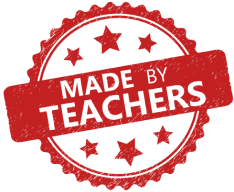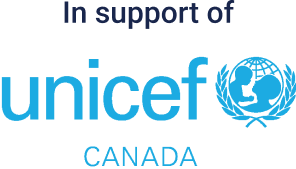Alberta Grade 7

CLICK HERE FOR CURRICULUM CONNECTIONS, LESSONS AND SUPPORT RESOURCES.
Kids Boost Immunity (KBI) provides educational content (lessons and support materials) developed by teachers and where needed, health experts, that is directly linked to curriculum and is available completely for free. Each lesson is paired with an online quiz that students can take on a laptop, tablet, or phone. Every time a student scores 80% or higher on a quiz, we donate life-saving vaccines to UNICEF Canada. To learn more about KBI, click here.
Click on the overarching curriculum themes below to see the curriculum outcomes that match KBI educational content. The full Grade 7 Alberta Curriculum Connections document is here.
- Science
-
Curricular outcomes:
Critical Thinking & Evaluating Information/ Navigating the World of Online (Mis)Information
- Applicable to all units
- Scientific Inquiry- Attitudes: Students will be encouraged to: Seek and apply evidence when evaluating alternative approaches to investigations, problems and issues (e.g., take the time to accurately gather evidence and use instruments carefully; consider observations, ideas and perspectives from a number of sources during investigations and before drawing conclusions and making decisions)
Science- Interactions & Ecosystems
- Stewardship Students will be encouraged to: Demonstrate sensitivity and responsibility in pursuing a balance between the needs of humans and a sustainable environment (e.g., assume personal responsibility for their impact on the environment; predict consequences of proposed personal actions on the environment; consider both immediate and long-term consequences of group actions; identify, objectively, potential conflicts between responding to human wants and needs and protecting the environment)
- 1. Investigate and describe relationships between humans and their environments, and identify related issues and scientific questions
- 2. Trace and interpret the flow of energy and materials within an ecosystem
- 3. Monitor a local environment, and assess the impacts of environmental factors on the growth, health and reproduction of organisms in that environment
- 4. Describe the relationships among knowledge, decisions and actions in maintaining life-supporting environments
Science- Plants for Food and Fibre
- 1. Investigate plant uses; and identify links among needs, technologies, products and impacts
- 3. Analyze plant environments, and identify impacts of specific factors and controls
- 4. Identify and interpret relationships among human needs, technologies, environments, and the culture and use of living things as sources of food and fibre
Applicable KBI lessons:
1. Critical Thinking & Evaluating Information
- Literacy builder worksheet/answer guide
- Lesson worksheet/answers
- Video worksheet/answers
- Inquiry activities/answer guides
- Numeracy activity/answers
2. Navigating the World of Online (Mis)Information
- Literacy builder worksheet/answer guide
- Lesson worksheet/answers
- Inquiry activities/answer guides
3. Environment & Climate Change
- Literacy builder worksheet/answer guide
- Lesson worksheet/answers
- Video worksheet/answers
- Inquiry activities/answer guides
- Numeracy activity/answers
4. Diversity of Living Things
- Literacy builder worksheet/answer guide
- Lesson worksheet/answers
- Video worksheet/answers
- Numeracy activity/answers
- Social Studies
-
Curricular outcomes:
DIMENSIONS OF THINKING
- 7.S.1 develop skills of critical thinking and creative thinking:
- analyze the validity of information based on context, bias, source, objectivity, evidence and reliability to broaden understanding of a topic or an issue
RESEARCH FOR DELIBERATIVE INQUIRY
- 7.S.7 apply the research process:
- develop a position that is supported by information gathered through research
- determine how information serves a variety of purposes and that the accuracy or relevance of information may need verification
- practise the responsible and ethical use of information and technology
- plan and conduct a search, using a wide variety of electronic sources
- develop a process to manage volumes of information that can be made available through electronic sources
- evaluate the relevance of electronically accessed information to a particular topic
- make connections among related, organized data, and assemble various pieces into a unified message ¾ refine searches to limit sources to a manager
Social Studies- Towards Confederation
- 7.1.1 appreciate the influence of diverse Aboriginal, French and British peoples on events leading to Confederation
- 7.1.2 appreciate the challenges of co-existence among peoples
- 7.1.3 compare and contrast diverse social and economic structures within the societies of Aboriginal, French and British peoples in pre-Confederation Canada by exploring and reflecting upon the following questions and issues:
- What were the different ways in which Aboriginal societies were structured (i.e., Iroquois Confederacy, Ojibwa, Mi’kmaq)? (CC, I, LPP)
- How did the structures of Aboriginal societies affect decision making in each society (i.e., role and status of women, consensus building)? (CC, TCC, PADM)
- What were the social and economic factors of European imperialism? (CC, I, TCC)
- In what ways did European imperialism impact the social and economic structures of Aboriginal societies?
- 7.1.4 assess, critically, the economic competition related to the control of the North American fur trade by exploring and reflecting upon the following questions and issues:
- How did the First Nations, French, British and Métis peoples interact with each other as participants in the fur trade? (TCC, ER, LPP)
- How did the fur trade contribute to the foundations of the economy in North America?
Social Studies- Following Confederation
- 7.2.2 recognize the positive and negative consequences of political decisions (PADM)
- 7.2.5 evaluate the impact of Confederation and of subsequent immigration on Canada from 1867 to the First World War by exploring and reflecting upon the following questions and issues:
- What were the underlying reasons for the negotiation of the numbered treaties? (C, I, LPP, TCC)
Applicable KBI lessons:
1. Critical Thinking & Evaluating Information
- Literacy builder worksheet/answer guide
- Lesson worksheet/answers
- Video worksheet/answers
- Inquiry activities/answer guides
- Numeracy activity/answers
2. Navigating the World of Online (Mis)Information
- Literacy builder worksheet/answer guide
- Lesson worksheet/answers
- Inquiry activities/answer guides
3. Life on Turtle Island
- Literacy builder worksheet/answer guide
- Lesson worksheet/answers
- 7.S.1 develop skills of critical thinking and creative thinking:
- English Language Arts (ELA)
-
Curricular outcomes:
1.1 Discover & Explore
- Extend understanding of ideas and information by finding and exploring oral, print and other media texts on related topics and themes
- Explore and assess oral, print and other media texts recommended by others
2.1 Use Strategies & Cues
- Adjust reading rate and strategies to account for changes in structural features of texts and complexity of content
- Identify, connect, and summarize in own words, the main ideas from two or more sources on the same topic
2.2 Respond to Texts
- Identify and explain the usefulness, effectiveness and limitations of various forms of oral, print and other media texts
- Reflect on, revise and elaborate on initial impressions of oral, print and other media texts, through subsequent reading, listening and viewing activities
3.1 Plan & Focus
- Discuss the types and sources of information appropriate for topic, audience, form, purpose and point of view
3.2 Select & Process
- Obtain information from a variety of sources, such as adults, peers, advertisements, magazines, lyrics, formal interviews, almanacs, broadcasts and videos, to explore research questions
- Distinguish between fact and opinion, and follow the development of argument and opinion
- Scan to locate specific information quickly; summarize and record information useful for research purposes
- Use pre-established criteria to evaluate the usefulness of a variety of information sources in terms of their structure and purpose
Applicable KBI lessons:
1. Critical Thinking & Evaluating Information
- Literacy builder worksheet/answer guide
- Lesson worksheet/answers
- Video worksheet/answers
- Inquiry activities/answer guides
- Numeracy activity/answers
2. Navigating the World of Online (Mis)Information
- Literacy builder worksheet/answer guide
- Lesson worksheet/answers
- Video worksheet/answers
- Inquiry activities/answer guides
Curriculum-Related Themes Throughout the Year
- Reflecting on hardships and courage during WWII (November)
-
Applicable KBI lessons:
1. Remembrance Day / Veterans Day / Armistice Day
- Building Leadership Skills To Help Others (December)
-
Applicable KBI lessons:
1. Winter Break - A Time To Reflect on Making a Difference
- Inquiry/creative activities
- Highlighting some key inspirational leaders during Black History Month as well as some experiences of refugees from different parts of the world (February)
-
Applicable KBI lessons:
1. Black History Month
2. Refugee Experiences
- Lesson worksheet/answers
- Inquiry activities
- Celebrating Inspiring Women in STEM (March)
-
Applicable KBI lessons:
1. International Women's Day - Celebrating Inspiring Women in STEM
- Literacy builder worksheets/answer guides
- Numeracy activity
- Inquiry activities
- Understanding communicable diseases and how they are spread, and learning about immunization. Suggested during flu season, immunization awareness week, and school vaccinations (if applicable)
-
Applicable KBI lessons:
1. Immunization Awareness Week
2. The Spread of Infectious Diseases
3. Scientific Curiosity and Vaccine Discoveries
- Literacy builder worksheets/answer guides
- Inquiry activities




